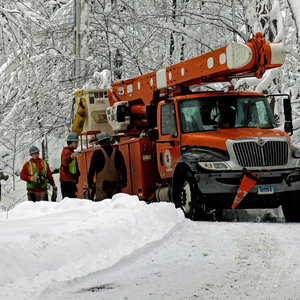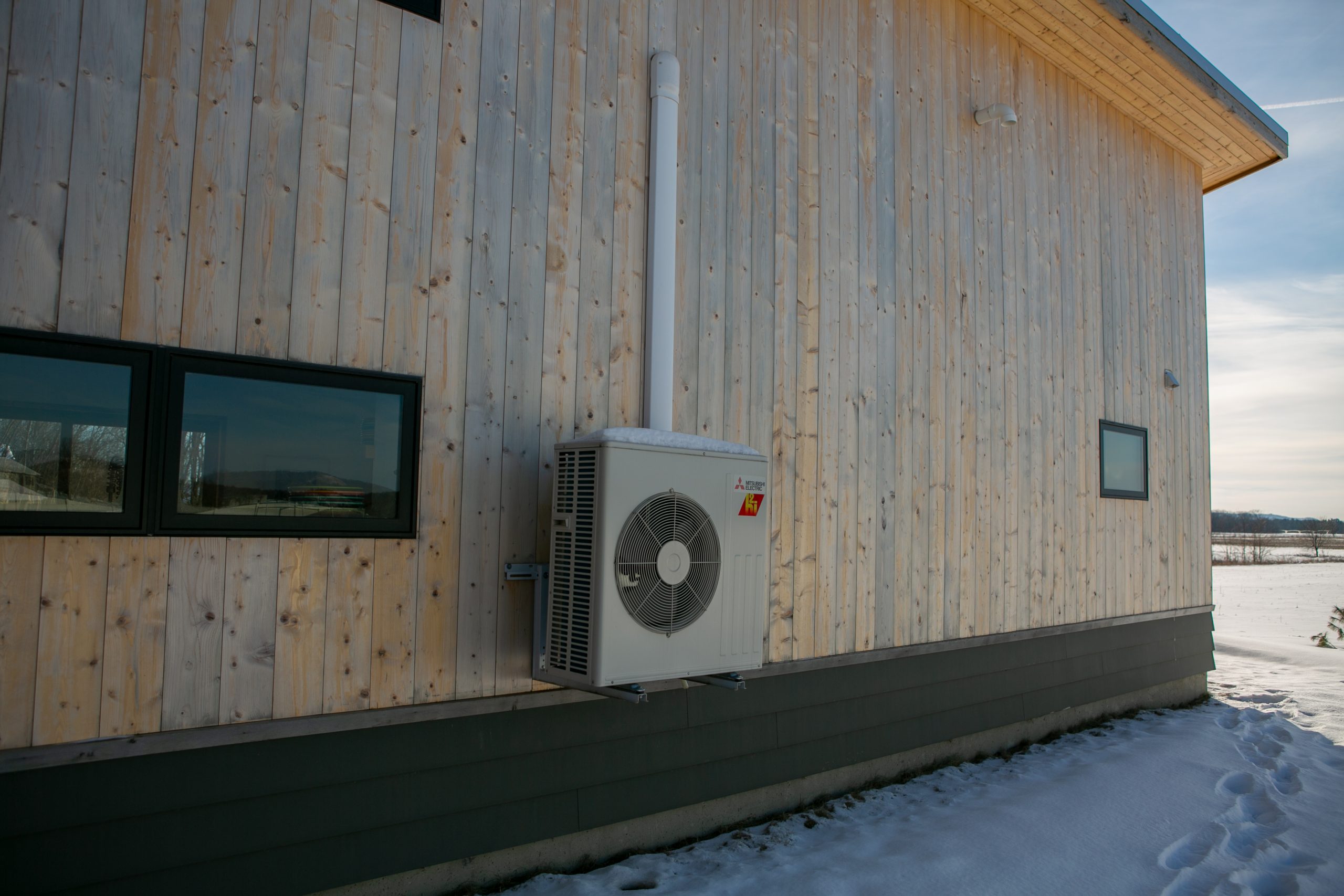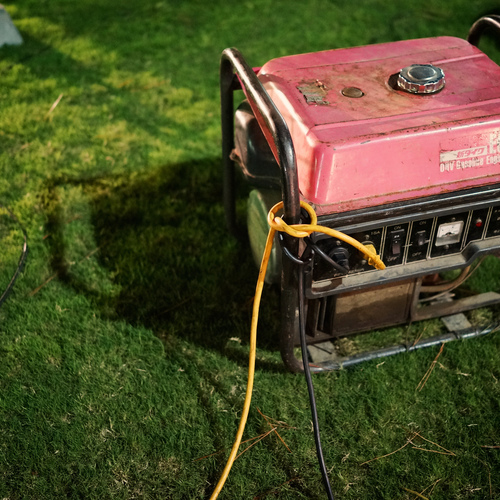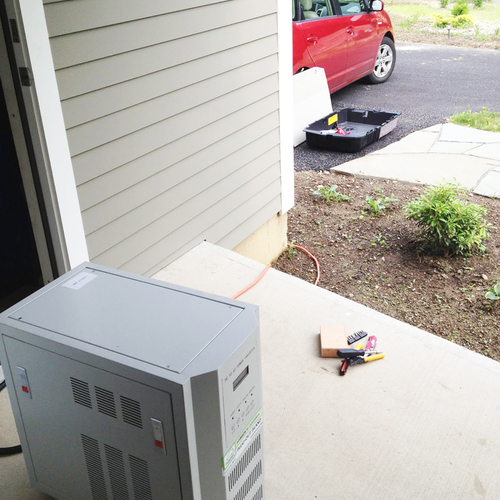
In this recent Q&A thread, orange cat asks, “If you wanted to outlast a winter or summer storm that knocks the power out in an all-electric house (heated/cooled with an air-to-air heat pump, plus resistance-based hot-water radiant heat), what would you put on a back-up panel?” He plans to have a small propane, dual-fuel portable generator that could supply the critical needs of the house for up to three days. He knows that he would need to supply the refrigerator, stove, sump pump, and some lights, as well as air-conditioning during summertime outages, but would like other suggestions. His electrician wants to finalize the electric panel. He then adds that he could get a larger generator, but he doesn’t want to store large quantities of fuel, and doesn’t want a gas line. Finally, he wonders where the optimal point is between adequate performance and a manageable fuel demand.
In a nutshell, his question, and the subject of this Spotlight, is: What’s the most efficient and sensible generator set-up to power his house for a few days?
Priorities and special considerations
The first response comes from gusfhb, who suggests that an internet connection should be on the list. He then adds that a 240 volt such as an A/C unit will require a lot of power. His well pump needs an 8kW generator to start, but without A/C, he can power the rest of his house.
Eric_U suggests that the conversation should be about “amps rather than watts.” He’s buying a 200 amp Champion standby propane generator, assuming that “it wasn’t worth saving $800 or whatever to have to pick and choose half the house.” His house is also all-electric, and he suggests researching the power consumption of anything heat-related. As an example, his…
Weekly Newsletter
Get building science and energy efficiency advice, plus special offers, in your inbox.

This article is only available to GBA Prime Members
Sign up for a free trial and get instant access to this article as well as GBA’s complete library of premium articles and construction details.
Start Free TrialAlready a member? Log in















3 Comments
Another thing to consider is bidirectional EVs. Most of the Kia EV vehicles do this already, with a pair of 120V outlets supplying 3.6kwh. Nissan Leaf is bidirectional. Ford Lightning does it with whole home power. GM Ultium based vehicles are supposed to be able to provide bidirectional charging. In my experience, blackouts are usually in some neighborhoods, but somewhere within a few miles there is power. And likely a DC fast charging station. For an extended outage, you may have to drive over there and top off your vehicle every other day. Running a small gas generator, you are doing this anyway. It might take 20 minutes longer with an EV.
PV systems have a few new factors to weigh too. First, wildfire smoke can reduce or block solar recharge. Second, increased hail size. Many panels are tested using International Electrotechnical Commission (IEC) standard 61215- 2, which subjects modules to 11 impacts of a 1-inch (25-millimeter) ice ball traveling at its terminal velocity. But 2-3 inch and larger stones are now being reported (https://www.bbc.com/future/article/20220314-how-big-can-hailstones-grow).
Last week we lost power for 28 hours and I had a chance to see how well the dual fuel generator and interlock kit I'd gotten after a hurricane last August worked. With a relatively quiet 3000 watt 120 volt inverter generator (firman who3042, $800 at costco) running on a 100 pound propane tank I was able to leave all 120 volt circuits on though I was careful what appliances I used together. We were able to use all of our lights (LED), internet, computers, refrigerator, freezer, and an 8000 btu Midea u shaped inverter window AC. We used a propane camp stove outside to cook and if it were winter we'd use an indoor rated propane heater to stay warm.
The generator is plugged into the house via a 30 amp 240 volt inlet with a panel interlock, using an adapter for the 120 volt 30 amp outlet on the generator. The generator lives in a gentent 30 feet from the house, just waiting to be plugged in. I went with a 100 pound propane tank with wheels that can be used and stored in a horizontal position so I can readily transport it for filling without a truck or cargo rack to keep it upright. I really like that with propane vs gas I can go over a day without refills and propane never goes bad.
Our usual heating/cooling source is a 240 volt heat pump and it would have been nice to have a 5-10kw 240 volt generator and a micro air soft start for the heat pump so I could run that but the Midea allowed us to have a cool bedroom when the heat index had been 110 prior to power going out which is important with a newborn.
When power came back on after 28 hours I'd used less than half of the 100 pound propane tank. I've since ordered a second one and also have a couple regular 20lb bbq tanks that my generator is small enough to use. I did the initial 25 hour oil change which went smoothly and am now set on scheduled maintenance for another 100 hours.The total cost for the 3000 watt inverter generator, gentent, interlock kit, 30amp inlet, wiring, 240 volt 30 amp extension cord plus 120 volt adapter, and 100 pound propane tank was ~$1500, not counting whatever someone may pay for installation. The window ac was another $400 but worth it for the low power draw and minimal noise. A 120 volt mini split would be nice but cost 2-4 times as much not accounting for install.
Were I to do anything differently I'd install a 50 amp inlet rather than 30 amp in case I ever get a generator that is more than 7000 watts, but with an outdoor electrical panel that's a simple enough change. The next project will be to install an emporia vue energy monitor so I can know how much electricity is being used in real time and more confidently know if I need to turn off the AC before turning on the microwave. We were conservative and mostly used a propane stove outdoors vs the microwave. Even without being able to power it our water heater held enough hot water to still take warm showers on the first day, and lukewarm on the second.
I like the idea of an automatic transfer switch and whole house standby generator but we don't have natural gas available and my house is all electric so I would need a large stationary propane tank or multiple 100lb tanks. I also looked into solar and a battery backup but every solar company I've contacted has simply said to get in touch with them if/when we trim our trees, but they don't have recommendations for how much/what to trim or who to contact. I have a dedicated UPS for my modem and router so we can still have internet for a few hours without firing up the generator. I've thought about a larger battery backup but given that we only seem to lose power for more than a few hours once every year or so that makes less sense without solar.
Log in or become a member to post a comment.
Sign up Log in